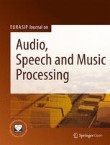Deep neural network-based bottleneck feature and denoising autoencoder-based dereverberation for distant-talking speaker identification
Deep neural network (DNN)-based approaches have been shown to be effective in many automatic speech recognition systems. However, few works have focused on DNNs for distant-talking speaker recognition. In this...
